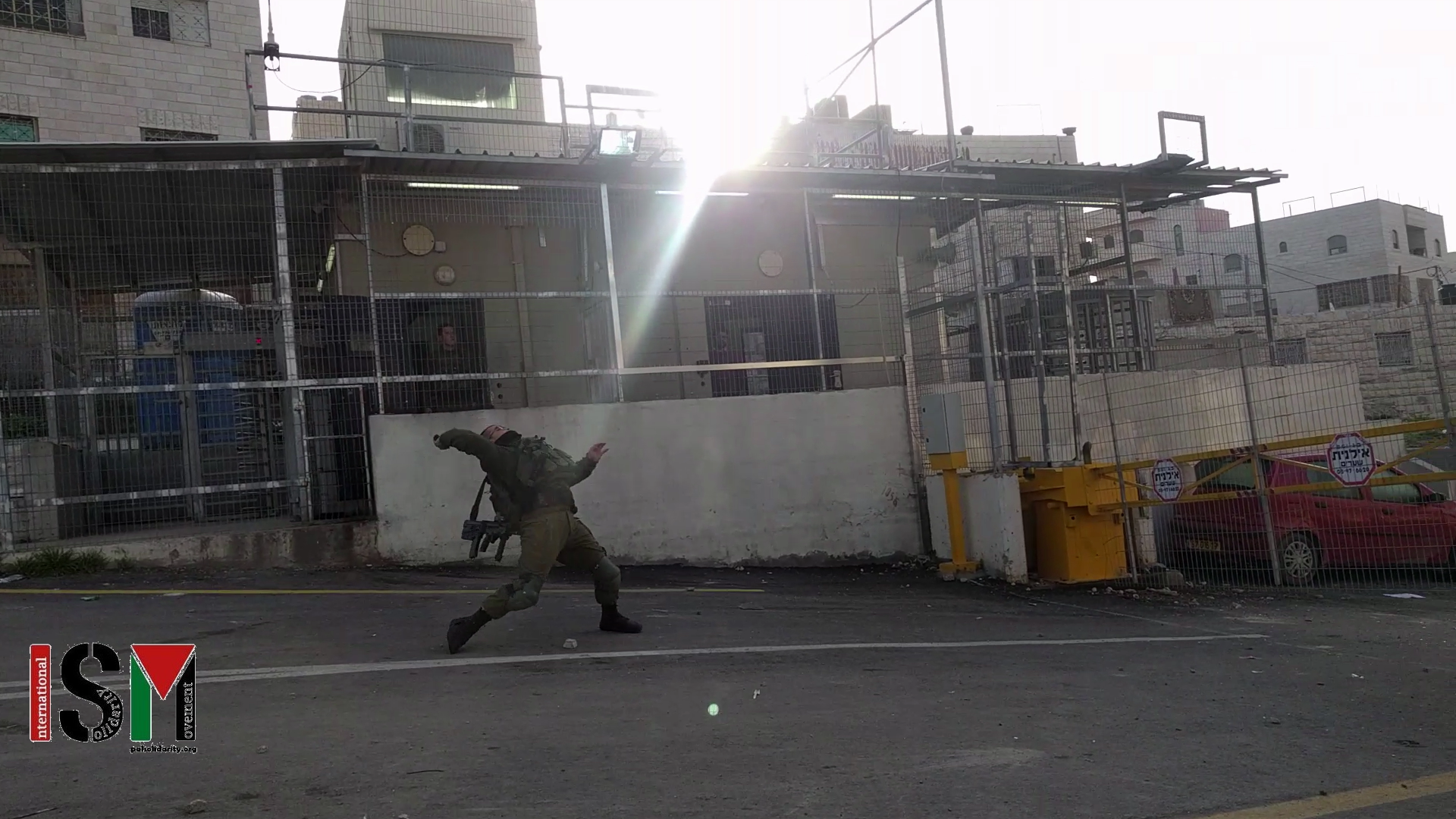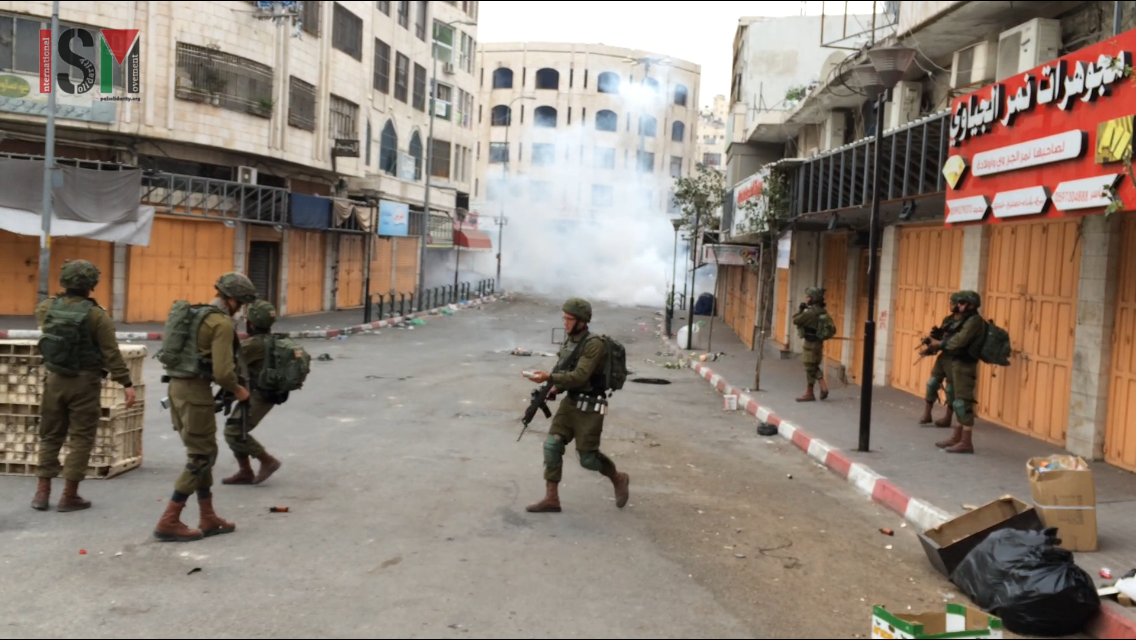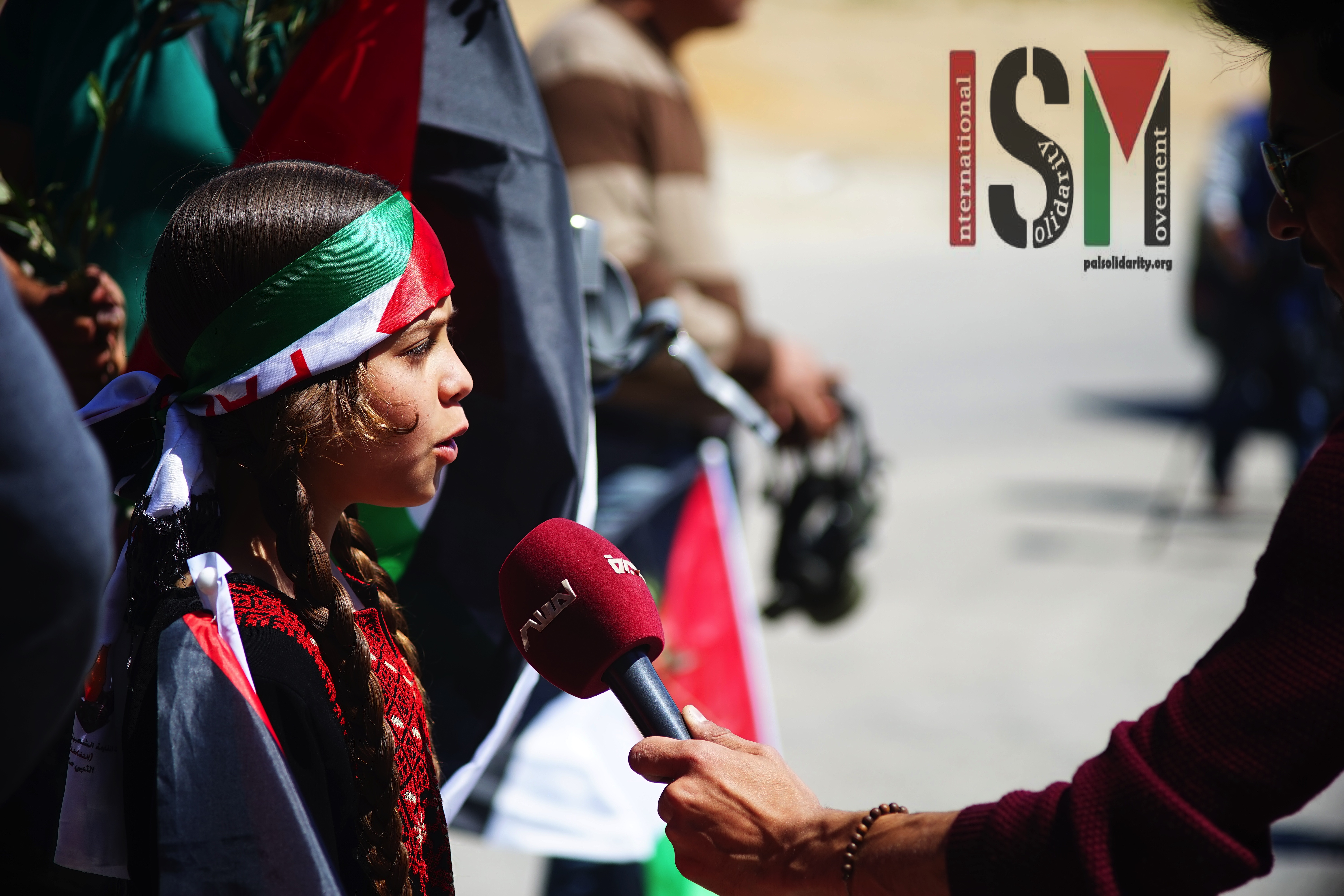Tag: Stun Grenades
-
Soldier uses stun grenade on school children at Salaymeh
February 24, 2019 | International Solidarity Movement, Al-Khalil team | Al-Khalil, occupied Palestine ISM were monitoring the checkpoint at Salaymeh this morning when they witnessed a soldier throwing a concussion grenade at children on the H1 side of the checkpoint. This morning the ISM team in Al-Khalil were monitoring the checkpoint at Salaymeh. Infamous illegal…
-
Second day of clashes Palestinian youth protest Gaza killings in Al Khalil
Saturday 31 March 2018, International Solidarity Movement al-Khalil/Hebron, Occupied West Bank, Palestine. Palestinian youth protested the killings in Gaza at Checkpoint 56. The Israeli soldiers fired teargas, stun grenades and live ammunition. Beginning at 8AM Palestinian youth took to the streets of al-Khalil/Hebron to protest the killings and injuries inflicted by the Israeli military on…



